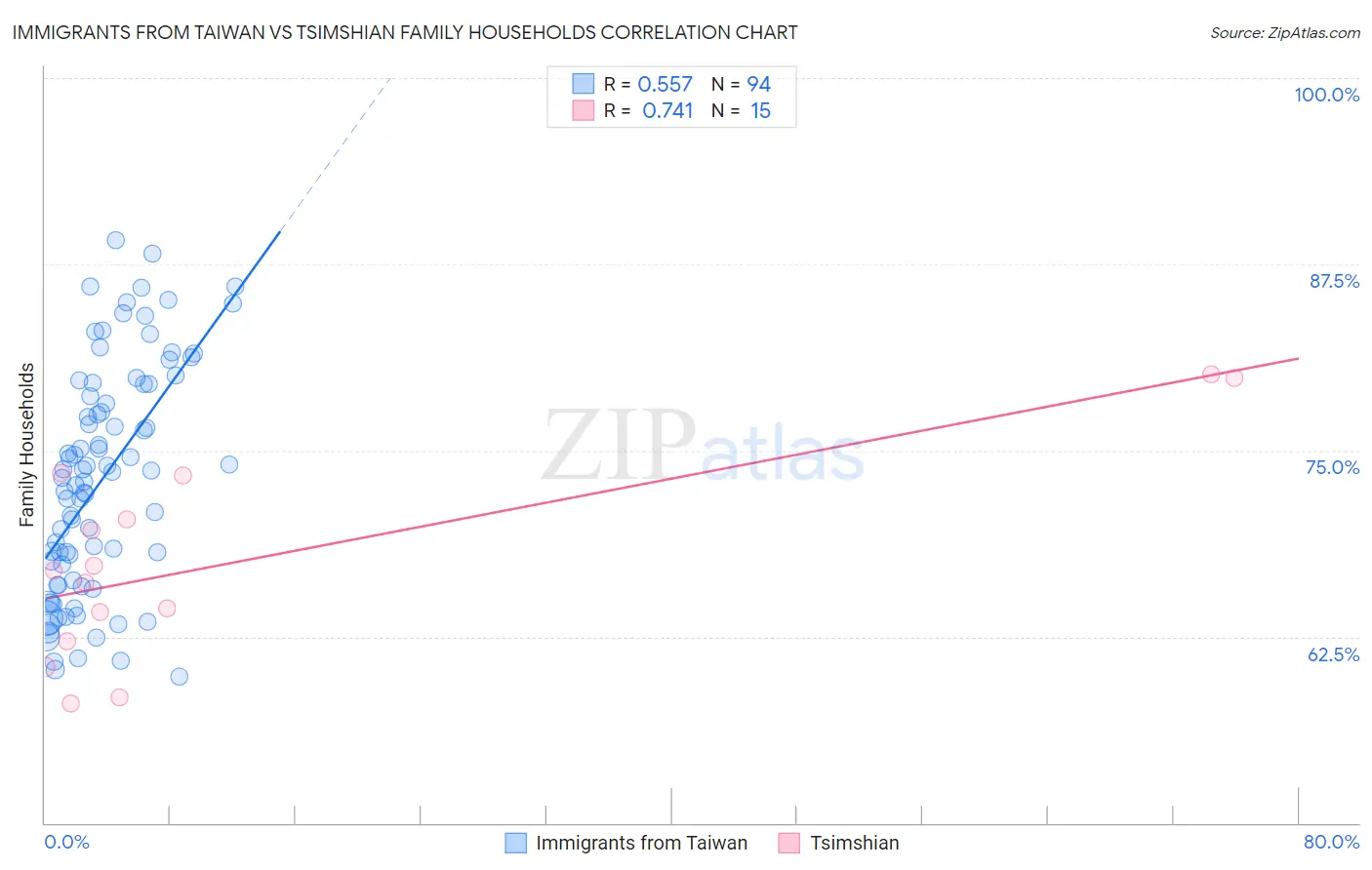Immigrants from Taiwan vs Tsimshian Family Households
COMPARE
Immigrants from Taiwan
Tsimshian
Family Households
Family Households Comparison
Immigrants from Taiwan
Tsimshian
68.0%
FAMILY HOUSEHOLDS
100.0/ 100
METRIC RATING
18th/ 347
METRIC RANK
67.1%
FAMILY HOUSEHOLDS
100.0/ 100
METRIC RATING
37th/ 347
METRIC RANK
Immigrants from Taiwan vs Tsimshian Family Households Correlation Chart
The statistical analysis conducted on geographies consisting of 298,121,078 people shows a substantial positive correlation between the proportion of Immigrants from Taiwan and percentage of family households in the United States with a correlation coefficient (R) of 0.557 and weighted average of 68.0%. Similarly, the statistical analysis conducted on geographies consisting of 15,626,544 people shows a strong positive correlation between the proportion of Tsimshian and percentage of family households in the United States with a correlation coefficient (R) of 0.741 and weighted average of 67.1%, a difference of 1.4%.

Family Households Correlation Summary
| Measurement | Immigrants from Taiwan | Tsimshian |
| Minimum | 59.8% | 58.0% |
| Maximum | 89.1% | 80.1% |
| Range | 29.3% | 22.1% |
| Mean | 73.0% | 67.7% |
| Median | 73.4% | 67.0% |
| Interquartile 25% (IQ1) | 66.3% | 62.2% |
| Interquartile 75% (IQ3) | 79.4% | 73.3% |
| Interquartile Range (IQR) | 13.2% | 11.1% |
| Standard Deviation (Sample) | 7.6% | 6.9% |
| Standard Deviation (Population) | 7.5% | 6.7% |
Demographics Similar to Immigrants from Taiwan and Tsimshian by Family Households
In terms of family households, the demographic groups most similar to Immigrants from Taiwan are Samoan (67.9%, a difference of 0.12%), Chinese (68.1%, a difference of 0.16%), Inupiat (67.8%, a difference of 0.37%), Cuban (67.7%, a difference of 0.42%), and Sri Lankan (67.7%, a difference of 0.46%). Similarly, the demographic groups most similar to Tsimshian are Peruvian (67.1%, a difference of 0.070%), Tohono O'odham (67.1%, a difference of 0.080%), Salvadoran (67.2%, a difference of 0.13%), Thai (67.2%, a difference of 0.13%), and Nepalese (67.2%, a difference of 0.17%).
| Demographics | Rating | Rank | Family Households |
| Chinese | 100.0 /100 | #17 | Exceptional 68.1% |
| Immigrants | Taiwan | 100.0 /100 | #18 | Exceptional 68.0% |
| Samoans | 100.0 /100 | #19 | Exceptional 67.9% |
| Inupiat | 100.0 /100 | #20 | Exceptional 67.8% |
| Cubans | 100.0 /100 | #21 | Exceptional 67.7% |
| Sri Lankans | 100.0 /100 | #22 | Exceptional 67.7% |
| Immigrants | Pakistan | 100.0 /100 | #23 | Exceptional 67.7% |
| Immigrants | South Eastern Asia | 100.0 /100 | #24 | Exceptional 67.5% |
| Immigrants | Nicaragua | 100.0 /100 | #25 | Exceptional 67.5% |
| Immigrants | India | 100.0 /100 | #26 | Exceptional 67.4% |
| Hispanics or Latinos | 100.0 /100 | #27 | Exceptional 67.4% |
| Hawaiians | 100.0 /100 | #28 | Exceptional 67.4% |
| Nicaraguans | 100.0 /100 | #29 | Exceptional 67.4% |
| Immigrants | Peru | 100.0 /100 | #30 | Exceptional 67.2% |
| Immigrants | Latin America | 100.0 /100 | #31 | Exceptional 67.2% |
| Nepalese | 100.0 /100 | #32 | Exceptional 67.2% |
| Salvadorans | 100.0 /100 | #33 | Exceptional 67.2% |
| Thais | 100.0 /100 | #34 | Exceptional 67.2% |
| Tohono O'odham | 100.0 /100 | #35 | Exceptional 67.1% |
| Peruvians | 100.0 /100 | #36 | Exceptional 67.1% |
| Tsimshian | 100.0 /100 | #37 | Exceptional 67.1% |